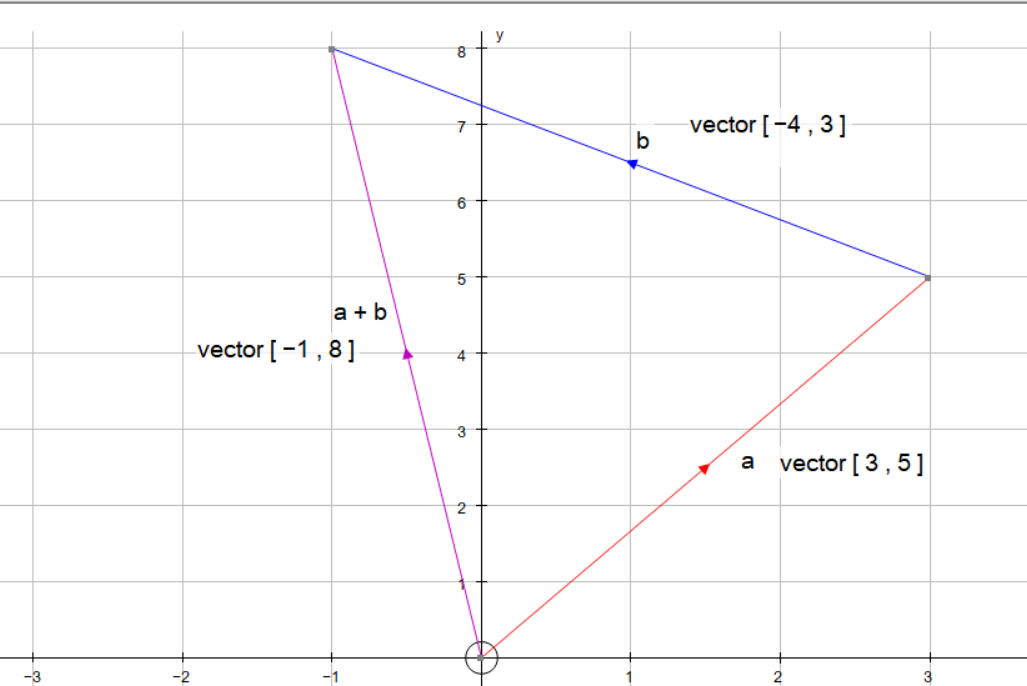Vector addition?? Please see below!
You are given vector a= <3, 5>, with a magnitude of √34cm and direction of 59o and vector b= <-4, 3> with a magnitude of 5cm and a direction of 143.1o.
a) Find the resultant (sum) by hand (magnitude and direction) by sketching (use the triangle method). See the video for directions on this. Show all markings and label everything.
b) Find the resultant (sum) by using vector addition. Show work.
c) Write 1-2 sentences about how these provide the same answer despite looking very different.
You are given vector a= <3, 5>, with a magnitude of √34cm and direction of 59o and vector b= <-4, 3> with a magnitude of 5cm and a direction of 143.1o.
a) Find the resultant (sum) by hand (magnitude and direction) by sketching (use the triangle method). See the video for directions on this. Show all markings and label everything.
b) Find the resultant (sum) by using vector addition. Show work.
c) Write 1-2 sentences about how these provide the same answer despite looking very different.
1 Answer
See below.
Explanation:

a.) You can see on the diagram that this has a displacement of
Pythagoras's theorem, where
b.)
Resultant vector
The direction of
( this is the angle between
c.) You will have to do this part, by looking at your text book.

